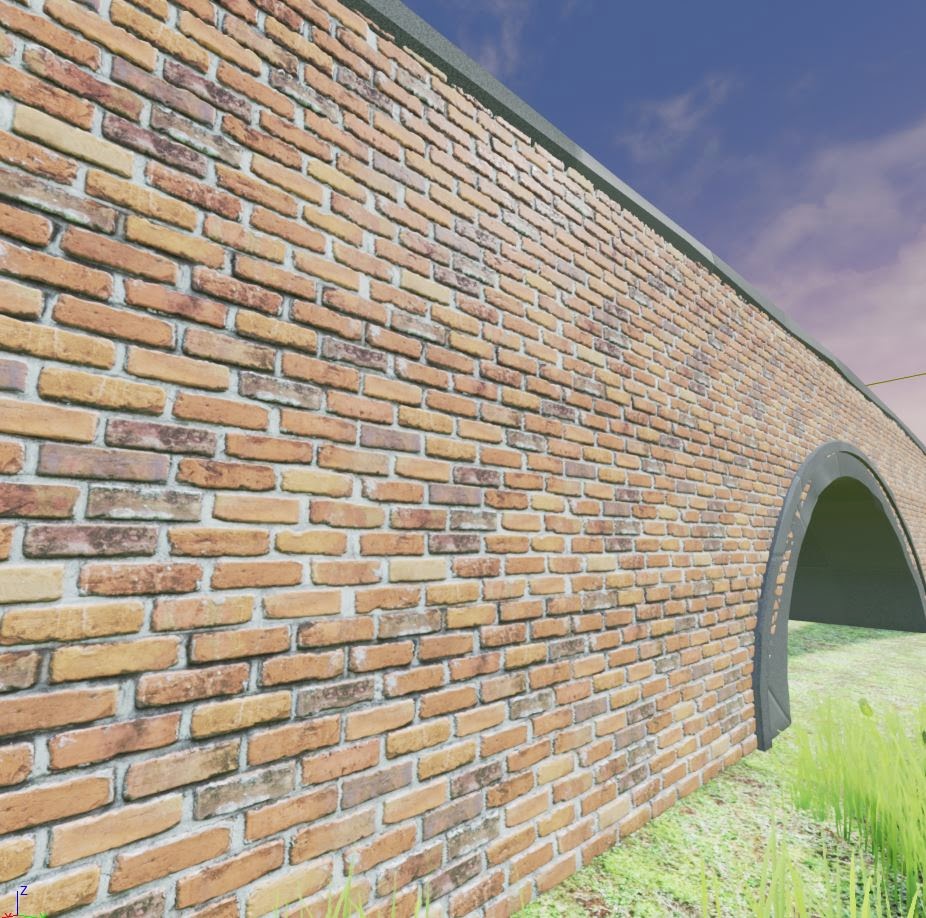Making trees is
horrible. With most assets you can call yourself happy when your asset looks
accurately like what it’s going to be. With trees you can’t model every single
leaf and every branch, instead you’re trying to create a random shape that will
read as a tree. Obviously you try and keep to reference as close as possible
and nail the basic skeleton. This in its self is quite difficult, trees are
huge complex forms, and are extremely difficult to get good ref for, especially
from multiple angles.
Here I have the Skeleton of
my tree. I thing I have managed to achieve quite an interesting silhouette. I’ve
also made all the branches from different shaped N-Gons, none of them are
uniformly round. The base its self is actually really quite a complex shape as
it will be possible to get close to it.
The complexity of
the branches changes drastically with the distance they will be from the
character. On the main trunk there are several steps at which I cut many tries
out, the top of the tree is extremely low poly.
As you can see I
have achieved a high texture quality. This is mostly due to a better
understanding in Unreal than the actual Texture Maps themselves. With this tree
I wanted to multiply two Albedos as I’ve seen some great result by doing this.
The Two Albedos I
was going to use were going to be one main large albedo that uses the unwrap
for the tree. On this Texture all the surface area will be unique, for example
patches of moss and cracks will be textured onto certain parts of the tree. On
such a large asset like a tree only having this texture sheet could result in a
relatively low texture density for the asset. So to counter this a second tiled
texture would be Multiplied to this first texture. If the tree only had the
tiled texture it could be bland as it would have the exact same surface quality
throughout. Using the method I have used the surface of the tree is varied and
also maintains a high res when viewed close up. I have also included all the
corresponding maps for both textures. When it comes to multiplying Normals you
strangely have to first multiply one of you normal maps by yellow and then you
“add” it to the other. I have also used
macro variation on this texture.

When I first tested
this texturing set up, I used an extremely poor Z-Brush poly paint, a tiling
texture that barely tiled and included large shadows. Even though the maps
themselves were poor the texture still looked really good, my poly paint even
included large areas that were untextured but the tile just filled these in.
The poor tiling was fixed due to there being features from both textures on the
finale surface, the Macro variation would also have helped. I’ve found that
using these methods poor texture sheets can now still make a good finale
texture.
Obviously I then re-did all
of these maps. Re-poly painted and re made the tillable map to a much higher
standard.
Two finished trees
The tree on the right
is to be used when you can actually get close to it. Here I have also added
Clematis Vines to hide a large joint between two branches, it also adds to the
visual complexity of the tree.
The tree on the
left is the same model but I haven’t included the Clematis. Also the branches
have been moved around. This is so that when you’re looking at many of these
trees you don’t see the repetition as there are two different trees.
Strangely although
creating two trees for a forest doesn’t actual seem like allot, I have come to
find out that this is actually more than is often currently being used. With a
group of mates we have been playing through Blood Born it’s a PS4 exclusive,
what we call a “next Gen” Title. Blood Born is truly an amazing looking game,
all the textures are amazing, and at some points every surface that you can
look at is tessellated. When a surface isn’t tessellated they are crowded with
physical geometry. Yet in this game when you’re in a court yard with a dozen
trees in it they are all the same exact tree. Not only are the trees the same
but this tree has an extremely recognise able feature (an area of peeling bark)
which I personally immediately noticed.
This is either a slip up by the artist that made this game or I am one
of only a few that would notice this. I personally believe that this isn’t a
mistake, your average gamer would not have noticed, I only noticed because of
the course I’m doing.
So back to our
project, I think at some points we are to judgemental of our work. We are viewing
our own work as game artists. The audience for our game are members of the
public who will likely not notice faults that we would make a big deal out of.
Sadly though this is also a project that we will be graded on
soooooooooooooooooooooooooooo, yea we do actually have to make extremely high-quality
work and decisions.
Although I have
been given the OK from my group with these trees I personally am not happy with
them. I’m still not happy with the arrangement of the alphas and altering them
is a tedious and time consuming task riddled with trial and error. Also I would
like to make another tree a Maple of some sort. But for now it’s going to be
nice to go back to some more traditional modelling and texturing. my text two
assets are a Boat Shed and a Bridge.














































